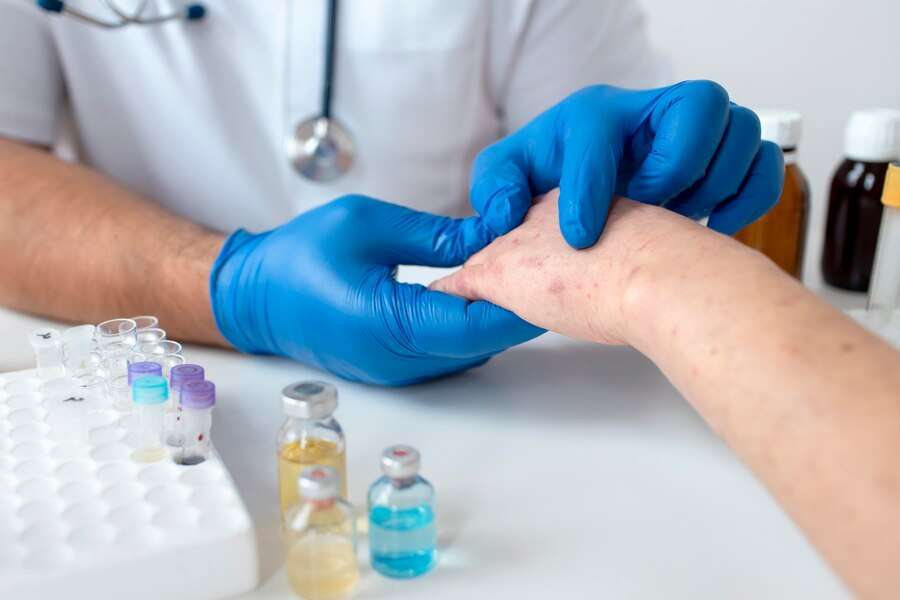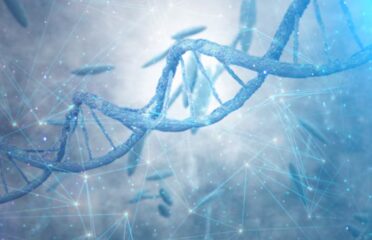Gaucher Disease
Overview

Gaucher disease is a rare genetic disorder passed on from parents to children. The most prevalent lysosomal storage disorder presents with an elevated incidence. It is an autosomal recessive inborn error of metabolism characterized by the toxic accumulation of glucocerebroside lipids within the organs. The most prevalent lysosomal storage disorder presents with an elevated incidence
In people who have Gaucher disease, there is one enzyme missing called lipids, that breaks down fatty substances. Therefore, lipids start to build up in certain organs such as the liver and spleen.
The spleen and liver become enlarged and stop functioning normally. The disease may also affect the lungs, brain, eyes, and even the bones.
Clinical manifestations vary in severity depending on the disease type. The activity assesses Gaucher's disease.
Symptoms
For some people, symptoms start as early as childhood.
Symptoms of Gaucher disease could be -
• Abdominal distention - Because the liver and especially the spleen can enlarge dramatically, the abdomen becomes distended and painful.
• Skeletal issues - Gaucher disease can weaken bone, increasing the risk of painful fractures. It can also interfere with the blood supply to your bones, which can cause portions of the bone to die.
• Blood clot - A decrease in healthy red blood cells, known as anaemia, can result in severe fatigue. Gaucher disease also affects the cells responsible for clotting, which can cause easy bruising and nosebleeds.
• Eye movement disorder
• Lung disorders
• Seizures - Gaucher disease affects the brain, and can cause abnormal eye movements, muscle rigidity, swallowing difficulties, and seizures.
Causes & Risks
• Gaucher disease is the result of certain fatty acid build-up in certain organs, especially the spleen and liver. This causes these organs to enlarge and can affect their function. The fatty substances also can build up in bone tissue, weakening the bone and increasing the risk of fractures.
• The disease is passed down from parents to children (is inherited) and is caused by a problem with the GBA gene.
• It is an autosomal recessive disorder. This means that each parent must pass along an abnormal GBA gene for their child to get Gaucher.
• Parents may have only 1 GBA gene and, therefore, not show any signs of the disease, but be carriers of the disease.
• The fatty substances also can build up in bone tissue, weakening the bone and increasing the risk of fractures. If the bone marrow is affected, it can interfere with your blood's ability to clot.
Test & Diagnosis
• The healthcare provider will look at the overall well-being and past health, to diagnose the condition. There will be a physical test prescribed.
• The healthcare provider will check for – The description of symptoms, family medical history, and blood test results.
• Because Gaucher disease has so many different symptoms, it can take time to get an accurate diagnosis.
• Doctors may use a standard blood test called a beta-glucosidase leukocyte test to check enzyme activity and diagnose Gaucher disease. A pediatrician may notice an enlarged spleen, bleeding problems, and low platelets without considering Gaucher disease.
• The diagnosis of Gaucher disease has to be confirmed by the measurement of the activity of the enzyme glucocerebroside in leukocytes.
Treatment
There is no cure for Gaucher disease. However, the treatment for the same can help control the symptoms. One may need treatments for symptoms and complications of Gaucher disease.
• Gaucher disease treatment depends on the type of Gaucher disease the patient is affected with. Treatment given could be.
• Treatment options for types 1 and 3 include medicine and enzyme replacement therapy, which is usually quite effective - Enzyme replacement therapy, which is effective for types 1 and 3
• Medications - Prescription drugs for bone pain and osteoporosis
• Regular physical exams and bone density screening to check your disease, Joint replacement surgery
• Bone marrow transplant
• Surgery to remove all or part of your spleen and
• Blood transfusions for severe anaemia and bleeding
Living With
It is way too challenging to live with a condition such as Gaucher disease. The majority of people live well with Gaucher Disease type 1, especially those diagnosed early and those receiving treatment. However, they still face many social and emotional challenges, depending on their age and the severity of symptoms.
As understood already, Gaucher disease interferes with the body's lysosomes, which act as garbage recyclers for our cells. Eventually, waste products build up in the body, causing symptoms such as stunted growth, painful and brittle bones, an enlarged liver and spleen, extreme fatigue, and profuse bleeding.
Fortunately, the disease is treatable with enzyme replacement therapy, but any bone damage done before starting treatment will be permanent, so time is of the essence.
Complications
• Gaucher disease is an inherited disorder that affects many of the body's organs and tissues.
• If Gaucher disease is left untreated, it can cause permanent damage to the body and shorten your lifespan. Gaucher disease treatment can allow the patient to live a full and active life. The most important part of optimizing your health with Gaucher disease is seeing a Gaucher specialist.
• Gaucher disease can cause other issues like -
Delayed growth
Delayed puberty
Weak bones
Bone pain
Brain damage
Joint pain
Trouble walking or getting around
Anaemia - Not enough healthy red blood cells
Fatigue Extreme tiredness
• Gaucher disease is a “toxic accumulation” inborn error of metabolism due to the accumulation of glucocerebroside lipids. This can be a serious complication.





